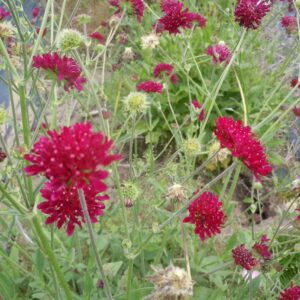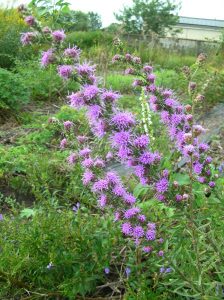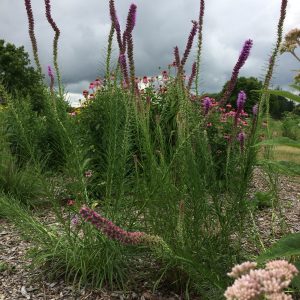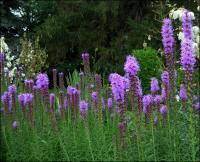Plants for Butterflies and Other Pollinators
- You cannot add "Holodiscus discolor Creambush, Ocean spray Z 5-10" to the cart because the product is out of stock.
Showing 105–112 of 223 results
-
Iris ‘Spark’ Z 4-8
Early blooming, intermediate bearded iris of brick-red standards and burgundy falls with a bright spark of a beard in the middle.
Early blooming, intermediate bearded iris of brick-red standards and burgundy falls with a bright spark of a beard in the middle.
Size: 23” x 12”
Care: sun in moist well-drained soil.
Wildlife Value: Welcomes bees with easy access to pollen.Iris is named after the Greek goddess who accompanied the souls of women to the Elysian Fields by way of the rainbow. Her footprints left flowers the colors of the rainbow. Iris means the eye of heaven. The iris is the flower of chivalry, having “a sword for its leaf and a lily for its heart.” Ruskin. Spark hybridized and introduced by Col. J. C. Nicholls in 1931,
-
Iris missouriensis Western blue flag, Rocky Mountain iris Z 3-8
In spring variegated, violet blue iris flowers - 6 perianth segments, 3 spreading to reflexed falls with a dark yellow-orange stripe down the middle with blue lines on a white background, & 3 purple standards.
OUT OF STOCK
In spring variegated, violet blue iris flowers – 6 perianth segments, 3 spreading to reflexed falls with a dark yellow-orange stripe down the middle with blue lines on a white background, & 3 purple standards.
Size: 12-24” x 9-12”
Care: sun to part shade in moist well-drained to moist soil. Divide regularly.
Native: Alberta and British Columbia, from Minnesota to Washington south to California east to New Mexico
Wildlife Value: Deer resistant. Attracts hummingbirds, provides pollen to bees.Named for the Missouri River although ironically Lewis collected it along the Blackfoot River in today’s Montana on July 5, 1806.
Paiute Indians of eastern California and southeastern Oregon made ear drops to remedy earaches with a decoction if the Iris roots. -
Knautia macedonica syn. Scabiosa rumelica Pincushion plant Z 5-9
Claret pincushions float at the tips of airy wands all summer & fall
Claret pincushions float at the tips of airy wands all summer & fall
Size: 2- 3’ x 10”
Care: sun in well-drained soil. Keep compact by cutting back to 10” in spring, if you wish
Native: Central Europe
Wildlife Value: attracts butterflies and beesKnautia named for German doctor & botanist Christoph Knaut (1656-1716) who published a method of classifying plants. Collected before 1879
-
Kniphofia triangularis Dwarf Red hot poker Z 5-8
From early to late summer, with dead-heading, vivid coral spikes, like a torch .
OUT OF STOCK
In late summer and fall vivid coral spikes, like a torch.
Size: 2’ x 12-18”
Care: sun in moist to well-drained soil, Drought tolerant once established
Native: mountain grassland & moist areas in the Eastern Cape to the Northern province of South Africa.
Wildlife Value: resistant to deer & rabbits, feeds hummingbirds, bees and butterflies1st described in 1854 in Enumeratio Plantarum Omnium Hucusque Cognitarum: Secumdum familias naturales v. 4 p. 551..
-
Lathyrus japonicus v. maritimus Beach pea Z 3-6
Magenta pea flowers June through August on its trailing stems. A legume, it puts nitrogen in the soil fertilizing plants growing nearby.
OUT OF STOCK – EMAIL FOR AVAILABILITY
Magenta pea flowers June through August on its trailing stems. A legume, it puts nitrogen in the soil fertilizing plants growing nearby.
Size: 18-24” tall but lays on ground, not upright
Care: sun in well-drained soil. Drought tolerant.
Native: all northern states from the Atlantic to the Pacific, Wisconsin native. (It seems strange that a variety of a plant native to Japan grows as a native in North America. The species, although named “Japonica” is circumpolar, native in the entire northern hemisphere.)
Wildlife Value: pollinated by bees, primarily bumblebeesIroquois cooked the stalks and leaves to remedy rheumatism. Taxonomic mess. First described and named in 1735 then another name in 1824, now changed again to its current name.
-
Liatris aspera Rough blazing star Z 4-9
Feathery purple buttons along tall spike
OUT OF STOCK
Feathery purple buttons along tall spike in late summer: August-October, after all other Liatris are done flowering.
Size: 24”-30” x 12”-18”
Care: Sun in well-drained soil
Native: So. Canada, much of eastern 3/4th of U.S.
Wildlife Value: attract butterflies (favorite nectar for Monarchs and Buckeyes) & hummingbirds.Aspera is Latin meaning rough. 1st collected by Frenchman André Michaux (1746-1802) who spent 11 years in America collecting hundreds of new plants.
-
Liatris pycnostachya Prairie blazing star Z 3-9
Tall, erect, purplish- pink spike in August-September
OUT OF STOCK
Tall, erect, purplish- pink spike in August-September
Size: 4’ x 1-2’
Care: well-drained soil in full sun
Native: central & SE US
Wildlife Value: deer resistant, attracts birds,& butterflies.Collected by French planthunter Andre Michaux in 1795 on the prairies of Illinois.
-
Liatris spicata Blazing star, Gayfeather, Button snakeroot Z 3-8
Rosy purple spikes in July and August, a flower arranger’s dream
Rosy purple spikes in July and August, a flower arranger’s dream
Size: 2-3' x 18"
Care: Full sun in moist to well-drained soil.
Native: Eastern and southern U. S., Wisconsin native
Wildlife Value: favorite nectar source for Buckeye butterflies & host for caterpillars of Painted lady, Fritillaries, Skippers, Sulphurs, Coppers & Checkerspot butterflies.Native Americans used roots medicinally for backaches, colic, dropsy and to strengthen a weak heart. The Dakota recognized this as an indication “when the flower is blue-red that corn is good to eat.” Nicollet Diary, August 13, 1838. The dried root reputedly repelled moths from stored clothes. First collected by English naturalist Mark Catesby and cultivated since 1732. Grown at America’s 1st botanic garden, Elgin Botanic Garden 1811.





